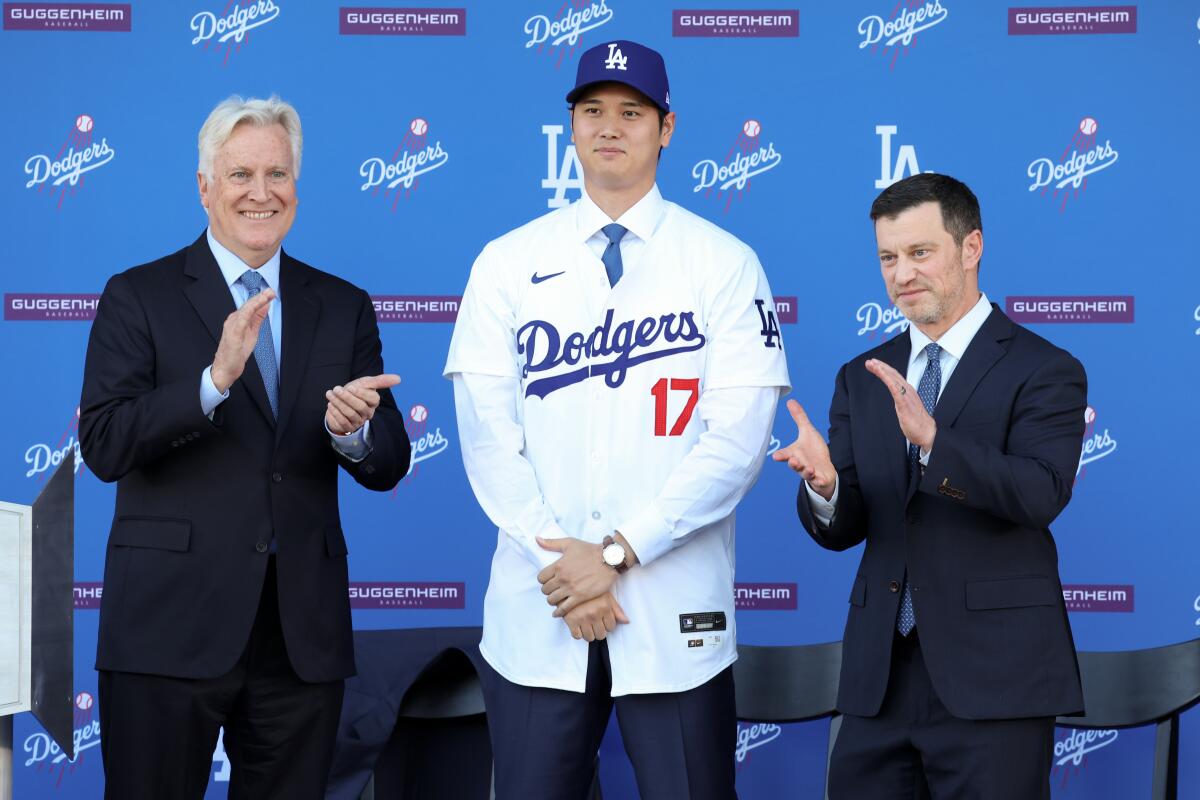Good morning. It’s Friday, Dec. 15. Here’s what you need to know to start your day.
California bullet trains: Full steam ahead?
Money talks, and last week, the federal government had about 6 billion things to say about high-speed rail projects in California.
Two projects received billions in federal grants — $3 billion for an electrified line between the Inland Empire and Las Vegas and $3.1 billion for the overdue, over-budget California high-speed rail project.
The private company Brightline is developing the SoCal-to-Vegas project, which it says will run 218 miles between Rancho Cucamonga and Las Vegas, with stops in Hesperia or Apple Valley. Existing Metrolink service will fill in the connection to downtown Los Angeles. Trains will reach 200 mph and complete the trip in about two hours, according to Brightline.
Times transportation reporter Rachel Uranga noted last week:
The company operates the only high-speed private rail service in the United States and its rapid rise runs in stark contrast to California’s effort to build a high-speed rail between Los Angeles and the Bay Area, which has been mired by politics, cost overruns and delays.
Remember that project? It’s been a while, so you’d be forgiven for forgetting. Back in 2008, after voters approved an initial $9 billion in funding for the project, officials estimated the system would be fully built and running trains by 2020. That was *checks watch* nearly four years ago. After more than a decade lag on land buying, delayed environmental reviews and legal challenges, rail officials now say they hope to have one section of the project — connecting Merced, Fresno and Bakersfield — up and running sometime between 2030 and 2033.
Many years and mph behind
Last year around this time, I took a train from Stuttgart, Germany, to Paris. The trip was roughly 310 miles — about the distance between Los Angeles and San Jose. It took just about three hours end-to-end. During that smooth, swift ride, I thought: Why can’t we get it together back home?
Japan opened the world’s first high-speed rail in 1964. That’s several years before the moon landing — and a few years before our current governor was born. France started running fast trains during Ronald Reagan’s first year as president. So why, in a state (and country) that talks a big game about ingenuity, are we so behind the high-speed-rail curve? Will we ever have nice trains?
I put those questions to Giovanni Circella, a transportation planning engineer and director of the 3 Revolutions Future Mobility Program at UC Davis. He researches ridership and economic impacts of rail projects in the state and is also wrapping up a study for the California High Speed Rail Authority focused on lessons to be learned from high-speed rail systems in Europe.
The sad state of our trains, he said, is “a side effect of the fact that the government thought there was no future for passenger railways in the U.S.”
Like the rest of our built world, it comes down to money and what our political leaders decided to prioritize with that money. In the post-WWII economic boom, more Americans bought more cars. And they wanted to drive those cars faster and to more places, leading to the interstate highway system. Around the same time, airplane travel also took off.
That “created a situation in which longer distances were covered by airplanes and the shorter distances would be covered by car,” Circella explained. “And so there was really no space remaining for railways in between. They were squeezed out with an obsolete infrastructure.”
Ridership fell sharply, as did government funding. Ray LaHood, a former U.S. secretary of Transportation, put U.S. transportation priorities into context in a guest commentary for CalMatters earlier this year:
Between 1949 and 2017, the federal government invested only $10 billion in high-speed rail with $4 billion of that dedicated to the California project, compared to investments of $777 billion in aviation and over $2 trillion in highways.
Benefits and more challenges down the line
Another challenge for California: We’re building this high-speed rail system from scratch. That’s because the typical train tracks aren’t capable of handling the speeds that bullet trains achieve.
Given this new funding, I asked Circella if he felt optimistic that high-speed rail can get back on track. He said he’s more “puzzled” than anything at this point.
Fundamentally, the technology is just an improved version of what’s been around since the early 1800s. But these new, fast electric locomotives have a lot going for them, he said:
- They’re more environmentally friendly (currently, just 2% of transportation emissions come from rail travel, while cars and trucks account for more than 80%).
- They’re more efficient in terms of moving people compared to all the space needed to move (and park) all our cars.
- They’re safer than driving, which killed more than 42,000 people in the U.S. last year.
- They can be “extremely competitive in shrinking the distance between cities,” he said, which can create more economic opportunities than our road network alone.
“I truly believe high-speed rail is a very nice mode of transportation that can provide a very comfortable and pleasant service to its riders,” Circella said. “However, especially in a place where there is no rail culture … it takes a very, very strong commitment to build the service.”
Circella sees stronger potential in the project to connect SoCal to Las Vegas. That’s because of Vegas’ more centralized hub for tourism, where people are less likely to want or need their own car to get around.
When/if the initial Central Valley section of the state’s ambitious network is completed, he expects ridership to be “disappointing.”
And that’s not surprising, given that it will connect the state’s fifth and ninth most populous cities and others with even fewer residents. But the optics of that could have a negative impact on public perception of the project as a “waste of public money.”
Something similar happened in Italy, he explained, when its initial high-speed network served smaller cities and faced public backlash. But the government stayed invested, completed the network and saw ridership soar, he said.
“The big question is, will there be political willingness [in California] to continue to invest in that to really bring the entire system to fruition?” Circella wondered.
That’s the multibillion-dollar question.
Today’s top stories

Shohei Ohtani, with Dodgers owner Mark Walter, left, and Andrew Friedman, president of baseball operations, wears his new jersey Thursday at Dodger Stadium. (Wally Skalij / Los Angeles Times)
Shohei Ohtani
Labor
Education
Climate and environment
Politics
More big stories
Get unlimited access to the Los Angeles Times. Subscribe here.
Today’s great reads

(Photo illustration by Jim Cooke/Los Angeles Times; Photo by Mark Von Holden/Invision/AP)
Behind the calamitous fall of hip-hop mogul Sean ‘Diddy’ Combs. Four separate plaintiffs have filed civil lawsuits against Combs in the last month accusing him of rape, sex-trafficking a minor, assault and a litany of other alleged abuses, imperiling his empire and sending shock waves through the music industry.
Other great reads
How can we make this newsletter more useful? Send comments to essentialcalifornia@latimes.com.
For your downtime

A plate of tamales at Sabores Oaxaquenos Restaurant in Koreatown. (Myung J. Chun / Los Angeles Times)
Going out
Staying in
And finally ... a great photo
Show us your favorite place in California! Send us photos you have taken of spots in California that are special — natural or human-made — and tell us why they’re important to you.

OnlyFans creator and entrepreneur Casey Boonstra is photographed in her Los Angeles apartment. (Jay L. Clendenin / Los Angeles Times)
Today’s great photo is from Times photographer Jay L. Clendenin. Pictured is OnlyFans creator and entrepreneur Casey Boonstra, one of three OnlyFans millionaires we profiled who live and spend lavishly in L.A.
Have a great day, from the Essential California team
Ryan Fonseca, reporter
Elvia Limón, multiplatform editor
Kevinisha Walker, multiplatform editor
No comments:
Post a Comment